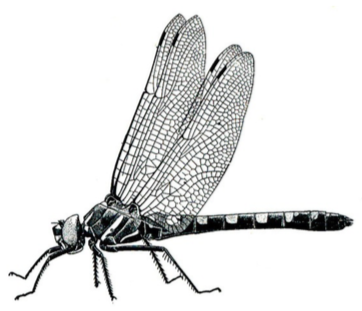By Jon Mendelson
Originally published in Thorn Creek News, Fall 2010. Republished in Summer 2020.
 When finding birds becomes more a chore than a pleasure, as in early summer when trees are fully leafed out and the migration is largely over, many birders turn their attention to insects. Butterfly watching, of course, has long been popular. One of the early Peterson Field Guides (from 1951), for example, was Butterflies and Moths with hundreds of hand-colored drawings. The most recent comprehensive guides are the Butterflies through Binoculars series by Jeffrey Glassberg, two volumes, eastern and western, with photos and descriptions of all North American species. Dragonfly watching now has its own Dragonflies through Binoculars, including color photos, descriptions and range maps (but no keys) for all 307 species found in North America. A better choice for a field guide to local dragonflies, I think, is the Color Guide to the Common Dragonflies of Wisconsin, pocket-sized, with excellent photos, and treating most of the common species of northeastern Illinois.
When finding birds becomes more a chore than a pleasure, as in early summer when trees are fully leafed out and the migration is largely over, many birders turn their attention to insects. Butterfly watching, of course, has long been popular. One of the early Peterson Field Guides (from 1951), for example, was Butterflies and Moths with hundreds of hand-colored drawings. The most recent comprehensive guides are the Butterflies through Binoculars series by Jeffrey Glassberg, two volumes, eastern and western, with photos and descriptions of all North American species. Dragonfly watching now has its own Dragonflies through Binoculars, including color photos, descriptions and range maps (but no keys) for all 307 species found in North America. A better choice for a field guide to local dragonflies, I think, is the Color Guide to the Common Dragonflies of Wisconsin, pocket-sized, with excellent photos, and treating most of the common species of northeastern Illinois.
The second indispensable element in dragonfly watching is the binocular itself. Here we are talking about close-focusing binoculars (8 feet or less), which allow one to observe the perched dragonfly, or one in flight if you are adept enough, as if it were in the hand.
Descriptions of various styles and makes of binoculars now regularly include close-focus distance, together with traditional information on field-of-view and magnification. Thorn Creek News, Summer 2020.
